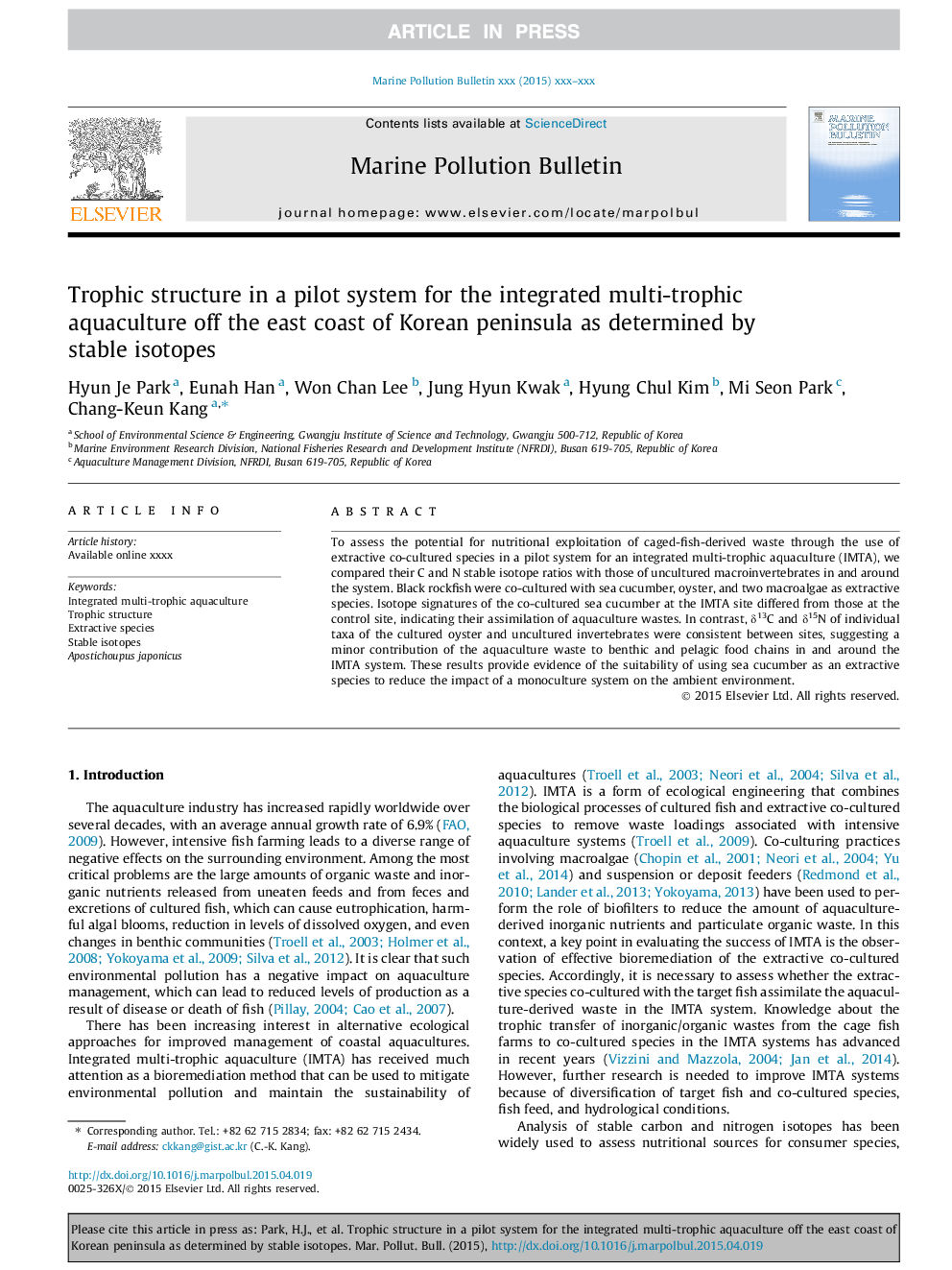| Article ID | Journal | Published Year | Pages | File Type |
|---|---|---|---|---|
| 6357307 | Marine Pollution Bulletin | 2015 | 8 Pages |
Abstract
To assess the potential for nutritional exploitation of caged-fish-derived waste through the use of extractive co-cultured species in a pilot system for an integrated multi-trophic aquaculture (IMTA), we compared their C and N stable isotope ratios with those of uncultured macroinvertebrates in and around the system. Black rockfish were co-cultured with sea cucumber, oyster, and two macroalgae as extractive species. Isotope signatures of the co-cultured sea cucumber at the IMTA site differed from those at the control site, indicating their assimilation of aquaculture wastes. In contrast, δ13C and δ15N of individual taxa of the cultured oyster and uncultured invertebrates were consistent between sites, suggesting a minor contribution of the aquaculture waste to benthic and pelagic food chains in and around the IMTA system. These results provide evidence of the suitability of using sea cucumber as an extractive species to reduce the impact of a monoculture system on the ambient environment.
Related Topics
Physical Sciences and Engineering
Earth and Planetary Sciences
Oceanography
Authors
Hyun Je Park, Eunah Han, Won Chan Lee, Jung Hyun Kwak, Hyung Chul Kim, Mi Seon Park, Chang-Keun Kang,
